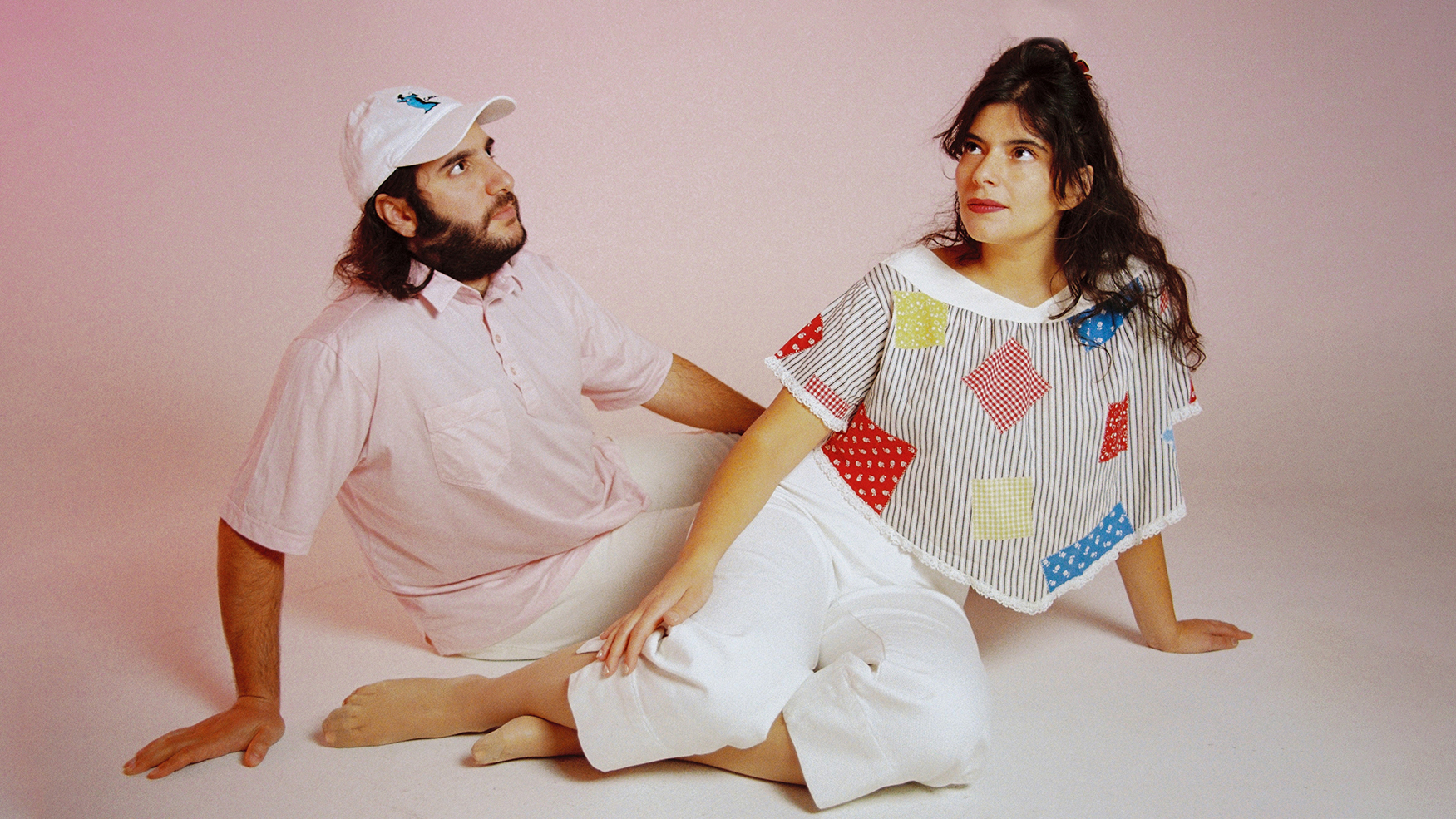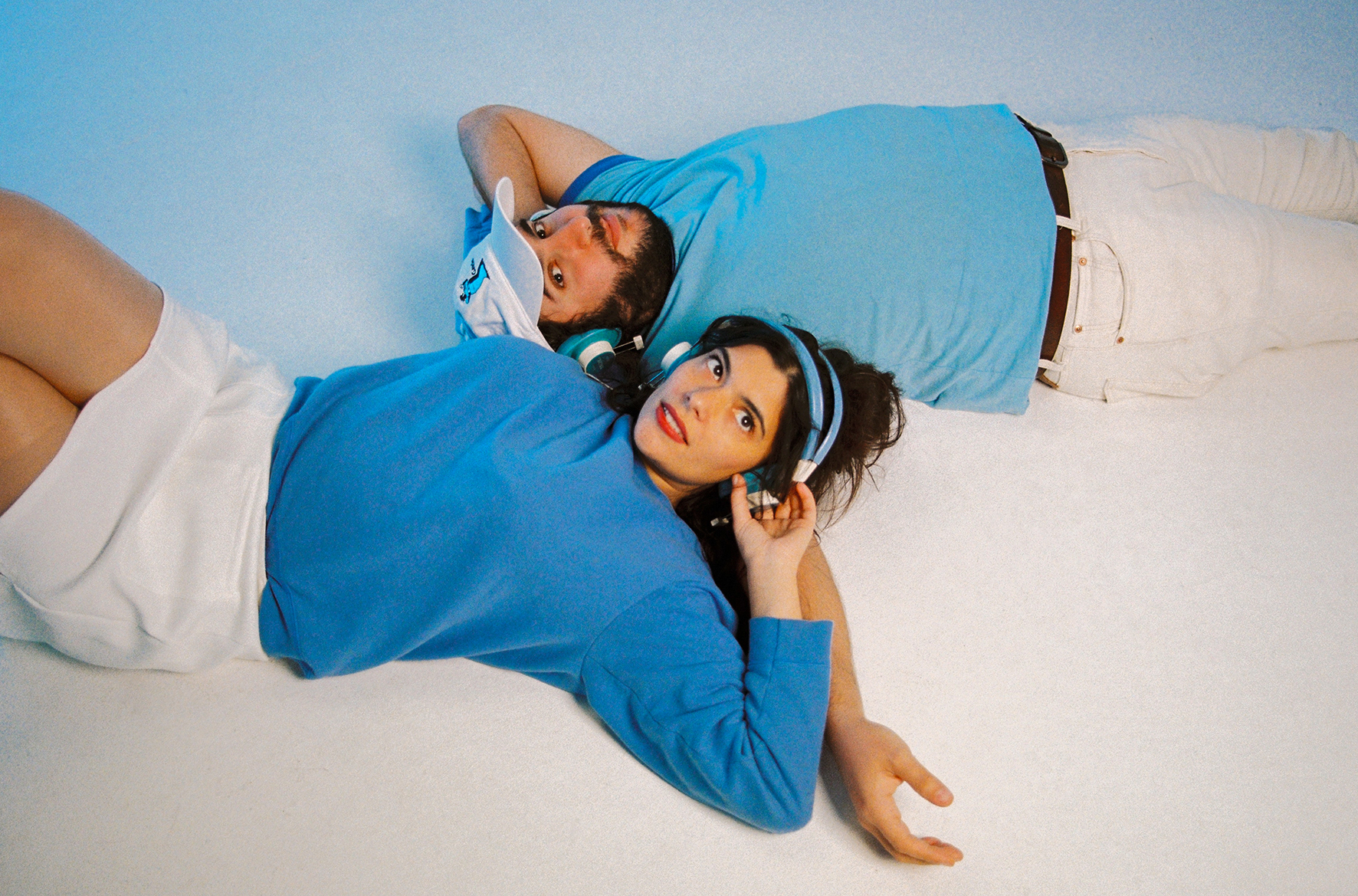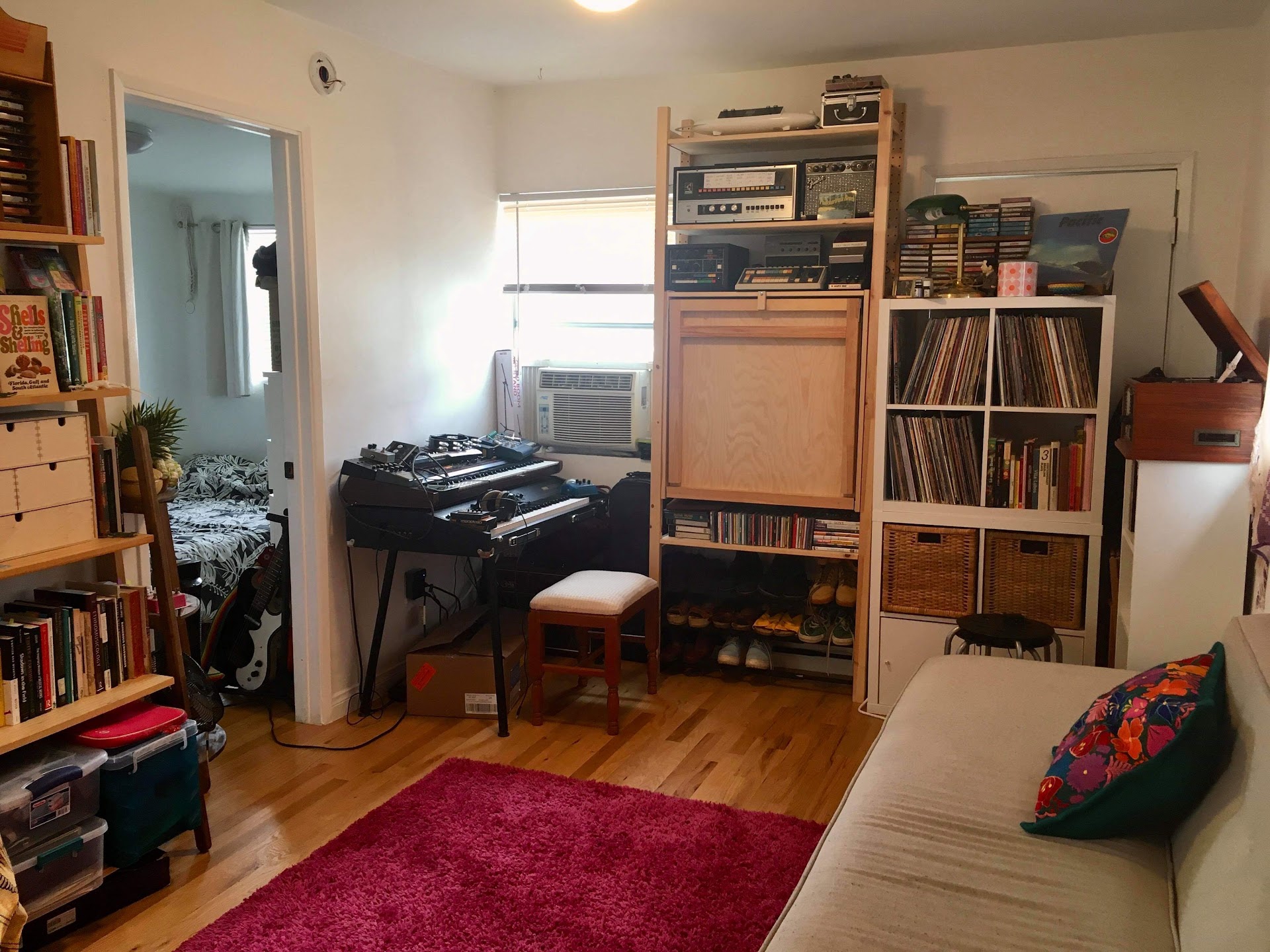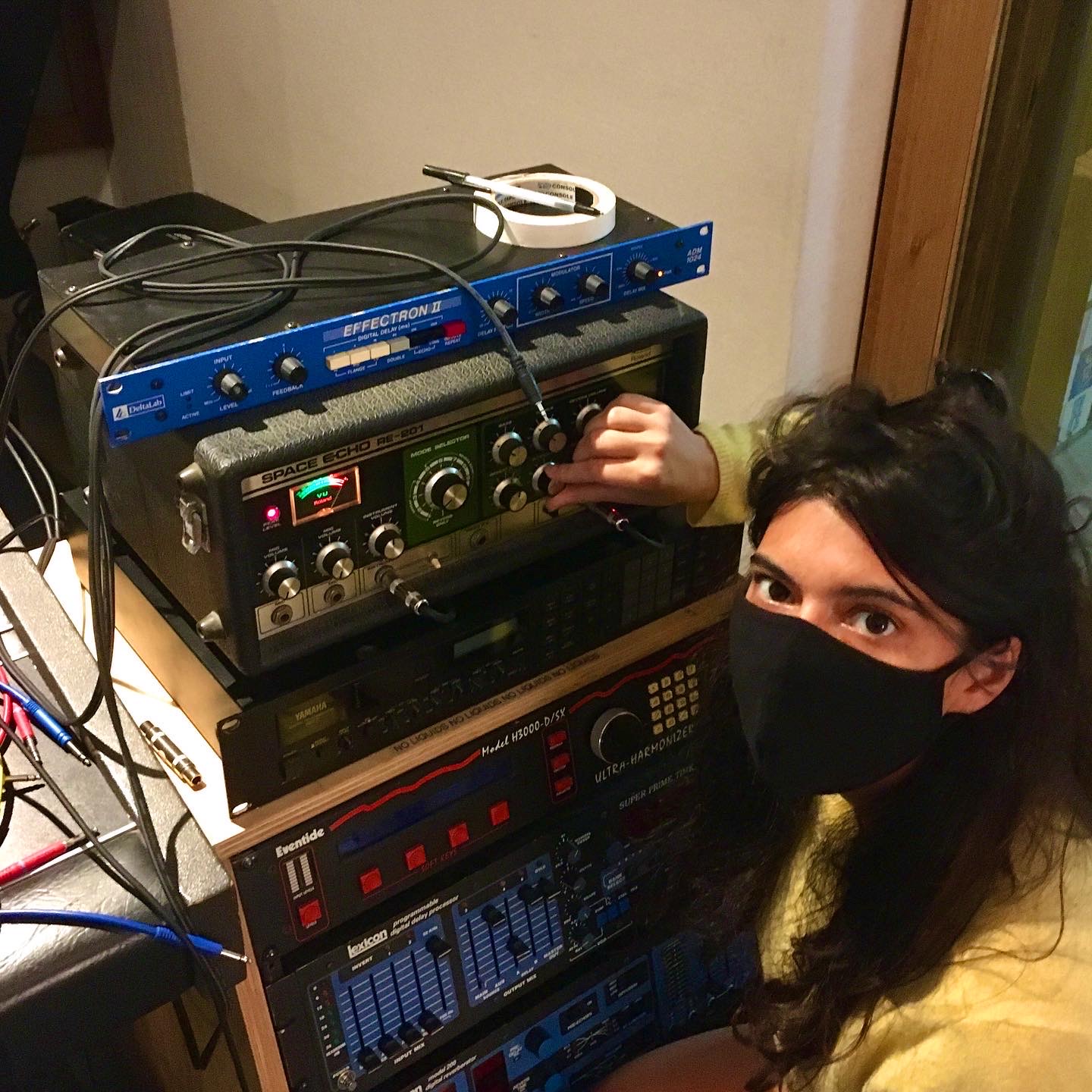Pearl & The Oysters: "We fell into the vintage analogue synth rabbit hole in our teens and have been obsessed ever since"
Pearl & The Oysters' breezy sound channels ‘70s Brazilian pop, Haruomi Hosono and Stereolab into music laced with vintage gear, obscure instruments and sonic surprises

Summer’s here, and we can’t think of a more suitable soundtrack for poolside lounging and sun-dappled relaxation than Pearl & The Oysters’ new album, Coast 2 Coast.
This whimsical and exotic collection of thirteen tracks draws on a smorgasbord of vintage gear and a a colourful palette of retro influences, from ‘70s Brazilian pop to Haruomi Hosono’s Pacific to the space-age sound of Stereolab, whose very own Lætitia Sadier contributed vocals to the record’s eleventh track, Read the Room.
Pearl & The Oysters is Juliette Pearl Davis and Joachim Polack, two music-makers that sparked a kinship in a Parisian high school that’s since guided them through decades, continents and albums towards their arrival in Los Angeles and a fifth full-length release, Coast 2 Coast.
The pair’s debut for LA-based tastemakers Stones Throw, the record documents the most recent chapter of their journey from Florida westwards, channelling reflections both personal and environmental across meticulously crafted productions laced with all manner of sonic surprises drawn from their extensive collection of musical gadgets, obscure instruments and classic analogue synths.
Their sound might be breezy, playful and tinged with kitsch, but their approach to music-making is anything but frivolous: these are two musicians utterly dedicated to the craft of making timeless pop songs.
We caught up with Juliette and Joachim to find out more about the making of their new record, Coast 2 Coast.
When did you start making music, and how did you first get started?
Want all the hottest music and gear news, reviews, deals, features and more, direct to your inbox? Sign up here.
“We started making music when we were kids. We had instrument lessons at different conservatories in Paris. Then we started playing in bands when we were teenagers, and really started recording ourselves in college, around 2009-10. We began recording the songs that would eventually become our debut self-titled album around 2014-15, a few months before we moved to the US.
Before we got deep into the analogue drum machine world, we really used to really not like them at all!
“Two things that were pretty quintessential to our sound and dictated the direction of the project early on were this cheap drum machine, the Boss DR-110, which Joachim had purchased in an eBay auction lot along with other cheap guitar pedals. It was our first time using an electronic drum machine on our recordings, and to be perfectly transparent, it was more out of convenience than aesthetically motivated, as neither of us could play drums and we didn’t have the money to go to a studio to record drums properly for every song.
“Actually, before we got deep into the analogue drum machine world, we really used to really not like them at all! [laughs] But somehow that DR-110 made its way into most of the tracks in our first album. And of course the Omnichord OM-27, which we ran through some wow and flutter and echo.
“The last thing that felt very crucial to our early sound was this Danelectro Longhorn bass that Joachim remembers having bought off eBay specifically because it already had flatwounds on it. It turned out to have the coolest, most rubbery sound ever, and was a big part of the sonic world of our first couple records.”

Tell us about your studio/set-up?
“Things are slowly starting to change since we now have access to the Stones Throw Studio in Highland Park, but since the beginning of Pearl & The Oysters as a recording project (2015 or so), we’ve been recording at home for the most part, in various and more or less ergonomic bedroom setups. And then we’d do drums in the studio, at least that’s what we did for Coast 2 Coast and Flowerland.
Our secret weapon is the Yamaha CP25. It doesn’t do a million things, but we can get really beautiful textures out of it
“In many ways it’s not ideal but we did make it work for years and it’s become a big part of the sound, for better or worse. We also feel like some things are easier to do at home (like tracking vocals for example, which we like to keep as private a process as possible) since we can take all the time we want to get things as polished as we want to, without any concern for time and money.
“It’s definitely more difficult to make records at home now that we’re shooting for a higher fidelity sound. Ideally we’d want to build a real studio at home, but that takes the kind of time and resources that we unfortunately still lack at the moment.”

What DAW (or DAWs) do you use, and why did you choose it?
“We use Logic, mostly because it’s the one that we first started learning how to record ourselves with in 2009-10, and we never really bothered to learn another one. But it works for us now and we’re pretty happy with the interface.”
What one piece of gear in your studio could you not do without, and why?
“Probably our Roland Juno-6 because of its versatile, swiss-army-knife capabilities. It ends up on so many of our recordings, and it was central in the making of our new record Coast 2 Coast.
“Our secret weapon is the Yamaha CP25 though, which is a kind of electronic piano from the 1970s, it has different onboard stereo effects and it has two separate detuning knobs for detuning the left and right channel independently. It doesn’t do a million things, but we can get really beautiful, shimmery textures out of it.”
What's the latest addition to your studio?
“We recently got this Yamaha CS-15, which is an amazing preset-based analogue mono/duophonic synth. Really warm and rich!"
What dream bit of gear would you love to have in your studio?
“We’d love to have nice outboard gear and fancier microphones, but as far as instruments, we’re really dreaming of getting a Yamaha CP-70 electric piano.”

When approaching a new track or project, where do you usually start?
“If we’re at home, we usually start by recording a drum machine loop and then start building the arrangements on top of that, in which case bass would come second. If we’re in the studio, we’re usually trying to record the full rhythm section (drums, bass, piano/guitar) as a base for the track. It is the classic way of making pop records, and for good reason. After years of making really dry ‘computer’ records, we’ve been really getting into incorporating the sound of the room more and more.
Could you pinpoint a few artists, albums or songs that you looked to for influence on Coast 2 Coast?
“We’ve been very influenced by Hosono’s Pacific, and the first Yellow Magic Orchestra album, but really this whole era in Japanese pop music was a huge influence in the making of this album—both the city pop stuff as well as the more fusion-y and electronic side of it, actually. Brazilian records of the mid-’70s (mostly João Donato and Marcos Valle, but also Jobim), and ‘70s Beach Boys were very important sources of inspiration too.
The space-age lounge sound of the ‘90s is something that we’re constantly channelling
“And then, as always the space-age lounge sound of the ‘90s is something that we’re constantly channelling - the High Llamas, Stereolab, Bertrand Burgalat and even bands like the Cardigans - probably without even trying to reference them consciously, it’s just part of our aesthetic DNA at this point! [laughs]”
We can hear tons of synths on the new record. What synths were you using, and why did you choose to use them?
“We just fell into the vintage synthesizer rabbit hole in our late teen years and have been obsessed with old analogue synths ever since. There are so many different kinds of textures these synths can get and it’s been a never-ending source of sensory wonder for us, even if some of these sounds probably feel so old and passé to a lot of people: for example, we love stacking monosynths on top of each other or doing synth counterpoint a la Wendy Carlos.
“This is the first album where we started using pads too, which is something that can sound really awesome with the right chord progression, like the main Roland Juno-6 sound in Paraiso.
“We also love using a single high string machine note towering over the arrangement, Roy Ayers-style—actually a friend and synth guru of ours called that the ‘sunshine note’ in reference to Everybody Loves the Sunshine, and we still refer to it that way ourselves. We love our Roland RS-09 but we’ve also used the Korg Delta for these.
“And of course we love the noise and sound effects we can get out of our mono synths, the Moog Realistic Concertmate MG-1 and Yamaha CS-01, and the little percussion synths and musical gadgets that we’ve been collecting for years now. That’s a huge part of our sound and general aesthetic.”

What did you use to make the sounds on Timetron? It’s a really interesting little interlude.
“This is a weird collage track that started with cutting up different sections of an Indian drum machine preset. Our guess is that this drum machine was designed for Indian classical musicians to practice to, as a sort of metronome. It’s supposed to emulate tablas and has amazing definition in the low end, it’s a really cool instrument with awesome preset patterns.
We love the noise and sound effects we can get out of our monosynths, the Moog Realistic Concertmate MG-1 and Yamaha CS-01
“Most of the other sounds layered on top of the drum machine we recorded and sequenced at the Vintage Synth Museum in Oakland - shout out to our friend Lance Hill, who now runs VSM out of Highland Park in LA. We used several things including a velocity-sensitive Moog electronic tom thingy, which we’re not sure of the name of, that was triggering weird noises out of a Micromoog.
“We also used some noises from the Korg MS-10 (one of our favourites, and one of the first synths that we ever owned) and the much rarer Gleeman Pentaphonic, which is a crazy weird synth. While we were at VSM, we also recorded some Synthi for the track Joyful Science.”
Laetitia Sadler sounds great on Read the Room. How did that collaboration come about?
“We met Laetitia when she played a festival that we co-organized in Paris in 2018 called Ostreoid. French producer Emmanuel Mario, aka Astrobal, who is also the drummer in her band Source Ensemble, had actually introduced us at a show after he’d seen Joachim wearing a White Noise t-shirt [laughs], synths dork unite!
“We stayed in touch in the following years and somehow mustered the courage to ask her to sing on it when we’d finished recording Juliette’s vocals in 2020. We feel so honoured and privileged that she agreed to do it!”
Pearl & The Oysters' Coast 2 Coast is out now on Stones Throw.



I'm MusicRadar's Tech Editor, working across everything from product news and gear-focused features to artist interviews and tech tutorials. I love electronic music and I'm perpetually fascinated by the tools we use to make it.